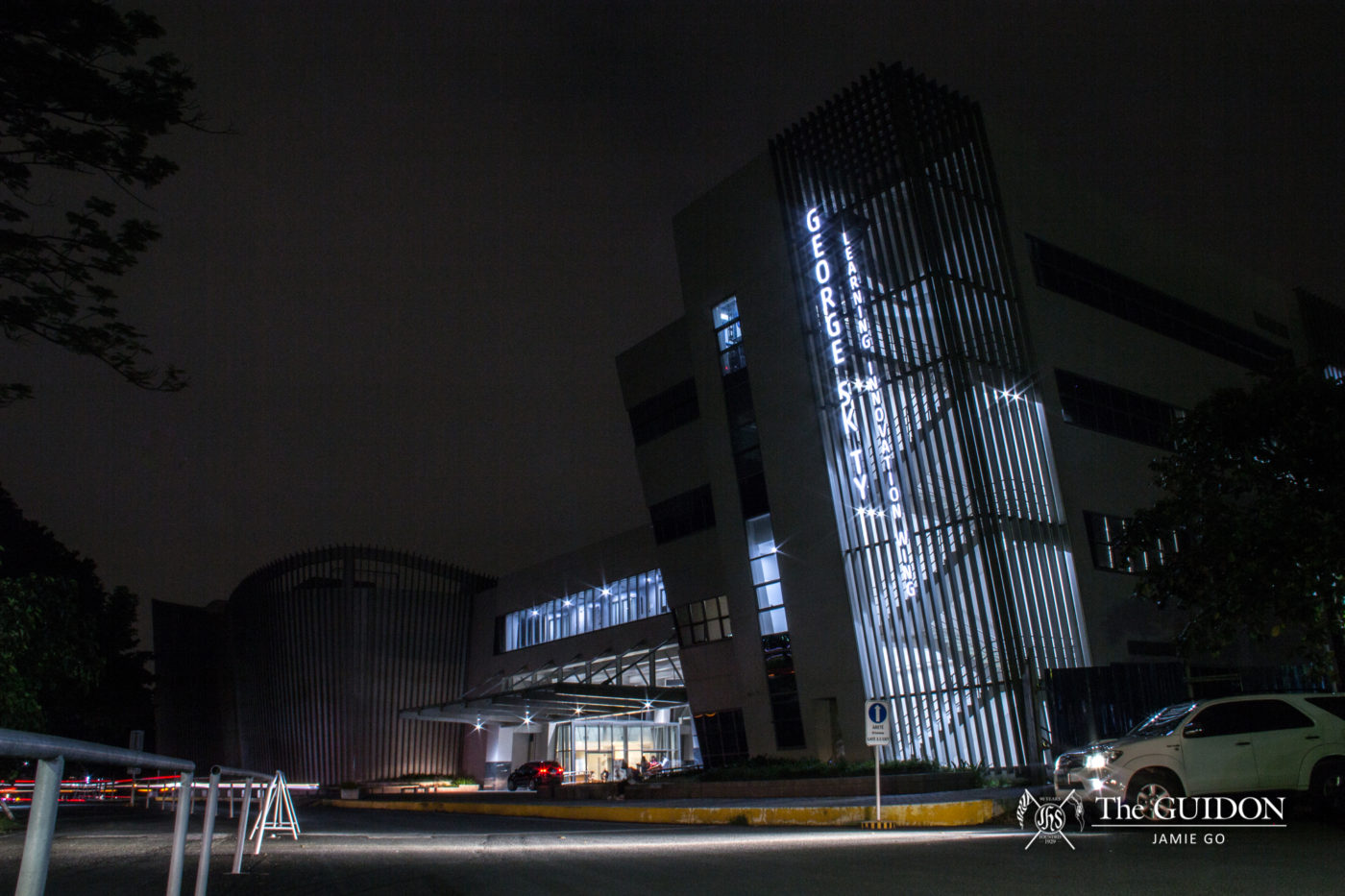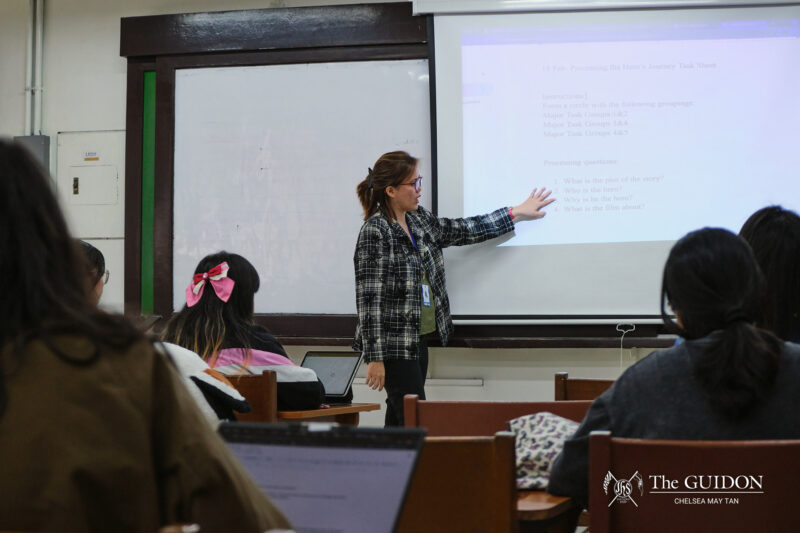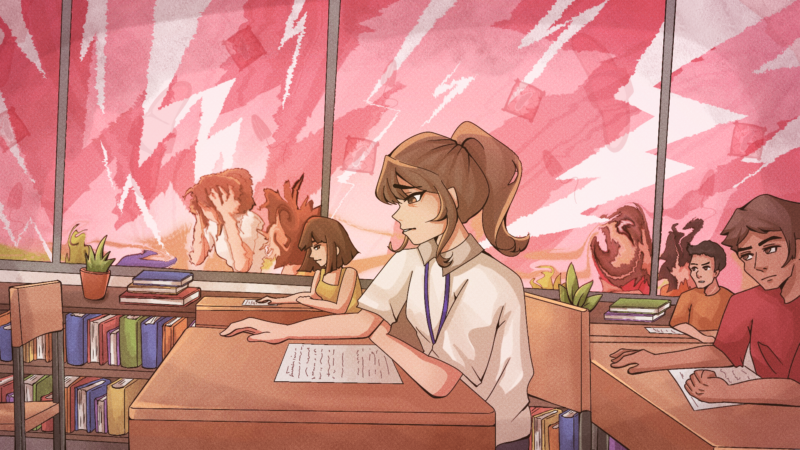THE ARETÉ stands proud as the Ateneo’s monument to artistic innovation and distinction, as established by its very name, which translates to “excellence” and “virtue” in Greek. Between the riveting staging of plays and the mainstay gallery of masterful art, the community and external critics can agree that excellence is on display within the Areté. However, whether or not it upholds its virtue has been put into question.
Recent controversies earlier in the year have since cast a different kind of spotlight on the Areté as both a structure and institution. Perhaps the most well-reported of these disputable incidences is the presence of Irene Marcos-Araneta during the launch of the Areté’s Ignacio B. Gimenez amphitheater. Despite the issuance of an official apology from University President Jett Villarin, SJ, coupled with the subsequent voluntary resignation of the Areté’s former Executive Director Yael Buencamino, the occurrence stained the Areté’s reputation both within the University and outside of Ateneo.
Notably, the controversial visit of Marcos to the Areté is not the first, given the building’s history of raising eyebrows with its administrative decisions. For instance, the Ignacio B. Gimenez amphitheatre was named after a known dictatorial “dummy” and Martial Law profiteer. Found within the same structure is the so-called Campos Interactive Teaching Laboratory, named after NutriAsia CEO Joselito Campos Jr., whose corporation has allegedly violated several labor laws, including the illegal dismissal of 75 contractual employees. Furthermore, Jollibee Food Corporation (JFC)—a group known for contractualization—CEO Ernesto Tanmantiong is the chairman of Ateneo’s Board of Trustees and contributed heavily to the construction of the Areté.
In direct contrast to the Areté’s identity as the University’s face of artistry and creation are individuals that the creative hub seemingly celebrates, despite their history of marginalizing the same groups that the Areté’s supposed innovations and values aim to serve.
The price of excellence
According to current Areté Executive Director Mercedes Rodrigo, PhD, the building’s upkeep and operations are at least partially paid for by donors, who vary from specific individuals providing financial assistance, to entire organizations donating to the building’s causes. “Some donors [will pay for construction]…other donors will pay for content and materials. Some patrons will donate to programs,” she says.
In accepting these donations, the Areté reportedly discerns grants the same way they discern the use of the building’s spaces. “We have an identity that we are trying to put forward,” she states, explaining that they look for values like creativity, innovation and community engagement when hosting both external events and student projects. Rodrigo notes that the Areté has turned down profitable donations and rental offers in the past if they come from groups and individuals whose values do not align with that of the Areté’s.
This then raises the question of why figures such as Ignacio B. Gimenez and Joselito Campos Jr. have their names enshrined in the building, especially since the Areté had the power to turn down donations in the first place. Similarly, in July of 2018, the Areté publicized a collaborative photoshoot with Tanmantiong’s JFC, depicting the Jollibee mascot posing with the building’s art exhibits. Rodrigo had no comment when asked about these controversial names being associated with spaces within the Areté and further asserted that companies external to the Ateneo had no substantial influence over the Areté’s board of chairpersons and administration.
Donations from affiliate backers notwithstanding, Rodrigo explains that the rest of the Areté’s regular expenses are paid for by the venue rental fees the building charges for the use of its spaces. Rodrigo notes that the Areté technically does not offer courses within the building, and therefore none of the tuition paid for by the students goes towards the Areté’s expenses. While the Restaurant Management course offered by Le Cordon Bleu Manila and the various classes under the Fine Arts Department are held within the building, these Ateneo departments also rent the use of the Areté’s spaces.
Virtue for others
Katipunan Secretary General of Panday Sining Elise Ofilada—a national organization of performing artists creating art to promote their views on political issues—says that accepting donations and naming venues after elite, yet questionable figures such as Gimenez and Campos sends a “confusing” message to the students. “Kung maninindigan ka talaga para sa worker’s rights, para sa human rights, bakit hinahayaan lang natin na magkaroon ng napalaking influence ang ganitong klaseng mga kumpanya sa ating mga kakayanin? (If we really want to stand by worker’s rights, or human rights, then why are we allowing the influences of these kinds of companies on our institutions?)” she says.
Sanggunian School of Humanities Representative Matt Rodriguez asserts that the names of powerful individuals and corporations within the Areté serve as a reminder that the structure does not belong to the students. To prove this point, he also cites specific complaints he receives regarding the Areté’s reportedly exorbitant venue rental fees, which the building imposes on arts and theater students who need venues for their personal and school-related projects.
University students do not stand alone in voicing complaints against the business practices of the Areté as an institution on campus. In addition to the students’ notion of the building’s privatization, President of the Ateneo Employees and Workers Union (AEWU) Sonnie Amata also claims that the Areté practices contractualization among its employees: “Maraming pumapasok na contractual dito. Sa Areté, marami din diyan…at ilan lang ang permanent diyan (There are a lot of contractual workers here. In the Areté, there is also a lot there, and only a few of them are permanently employed.)”
In response to the alleged practice of contractualization in the building, Attorney Alma Renee Pavia, head of the Employee Relations and Engagement section of the Office of Human Resource Management and Organization Development notes that “the University complies with the requirements of the law in engaging the services of contractors/sub-contractors and project employees.”
In addition to this, she says that “entering a contracting agreement…is not absolutely prohibited by law.” She cited Book Six in the Labor Code regarding post-employment, which details the Department of Labor and Employment’s prohibition on labor only contracting wherein employers hire workers without guarantee of proper wages and benefits. “The University, likewise, ensures that the rights of the employees, as well as the contractors’ employees, are respected and protected,” she adds.
Walking the talk
Complaints regarding the building’s administrative operations and processes continue to highlight differences between virtue and action. The occasional forms of hypocrisy demonstrated by the Areté as an institution notably reflects an instance in the past where the University contradicted one of its own touted advocacies.
The Ateneo is known for its history of condemning the human rights violations and atrocities that transpired during the dictatorship of the late Ferdinand Marcos. Regardless of this stance, the former dictator’s wife Imelda Marcos was reported on campus as a guest during the Ateneo Scholarship Foundation’s 40th anniversary in July 2014. Although Villarin issued a statement of apology following the occurrence, the incident seemingly repeated itself with the controversial Marcos-Araneta visit to the Areté.
Such disparities between how an institution speaks and acts have revealed a pattern of dissonance between ethics and practicum. Part of this pattern continuously manifests itself in the Areté. The creative hub was intended to be a symbol and standard for holistic excellence, as well as a common ground for various disciplines within and outside the Ateneo. However, because of the Areté’s seeming self-contradiction, as evidenced by the controversies and questionable decisions that plague the building’s identity, the innovation center runs the risk of alienating the students and thinkers they wanted to bring together in the first place.
What do you think about this story? Send your comments and suggestions here: tgdn.co/2ZqqodZ







